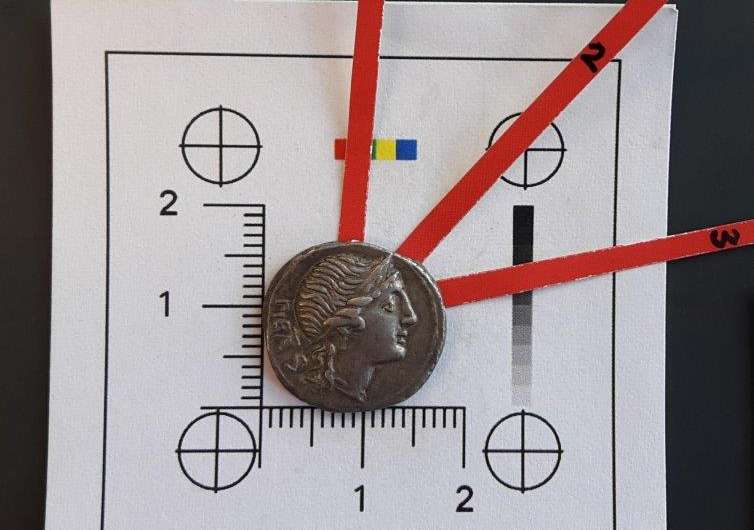Analysis finds defeat of Hannibal 'written in the coins of the Roman Empire'

Analysis of ancient Roman coins has shown that the defeat of the Carthaginian general Hannibal led to a flood of wealth across the Roman Empire from the silver mines of Spain. This finding, which offers a tangible record of the transition of Rome from a regional power to an empire, is presented at the Goldschmidt geochemistry conference in Paris.
Hannibal famously marched his elephants across the Alps in a failed attack on Rome during the Second Punic War, regarded as one of the pivotal events of European history. Rome entered the war as the dominant power in Italy, but emerged an empire. The war led to the conquest of the Iberian Peninsula, with the Romans gradually gaining control over the lucrative Spanish silver mines from around 211 B.C. Revenues from the rich Spanish silver mines coupled with booty and extensive war reparations from Carthage funded the expansion of its territory.
Now, the application of geochemical analysis techniques has provided proof of the importance of the Spanish silver to the Roman conquest. A group of scientists based in Germany and Denmark analysed 70 Roman coins dating from 310-300 B.C. to 101 B.C., a period encompassing the Second Punic War. Using mass spectrometry, they showed that lead in the coins made after 209 B.C. has distinctive isotopic signatures identifying most of the later coins as presumably originating from Spanish sources. The changing origin of the coin bullion is mirrored by differing ratios of the lead isotopes 208Pb, 207Pb, 206Pb and 204Pb, which serve as geological clocks recording the formation age of the ores used to extract the silver. After 209 B.C., the lead isotope signatures mostly correspond to those of deposits in southeast and southwest Spain or to mixtures of metal extracted from these districts.
"Before the war, we find that the Roman coins are made of silver from the same sources as the coinage issued by Greek cities in Italy and Sicily. In other words the lead isotope signatures of the coins correspond to those of silver ores and metallurgical products from the Aegean region," said researcher Katrin Westner. "But the defeat of Carthage led to huge reparation payments to Rome, as well as Rome gaining large amounts of booty and ownership of the rich Spanish silver mines. From 209 B.C., we see that the majority of Roman coins show geochemical signatures typical for Iberian silver."
"This massive influx of Iberian silver significantly changed Rome's economy, allowing it to become the superpower of its day. We know this from the histories of Livy and Polybius and others, but our work gives contemporary scientific proof of the rise of Rome. What our work shows is that the defeat of Hannibal and the rise of Rome is written in the coins of the Roman Empire."
Professor Kevin Butcher of the University of Warwick, U.K., said, "This research demonstrates how scientific analysis of ancient coins can make a significant contribution to historical research. It allows what was previously speculation about the importance of Spanish silver for the coinage of Rome to be placed on a firm foundation."
Provided by Goldschmidt Conference





















